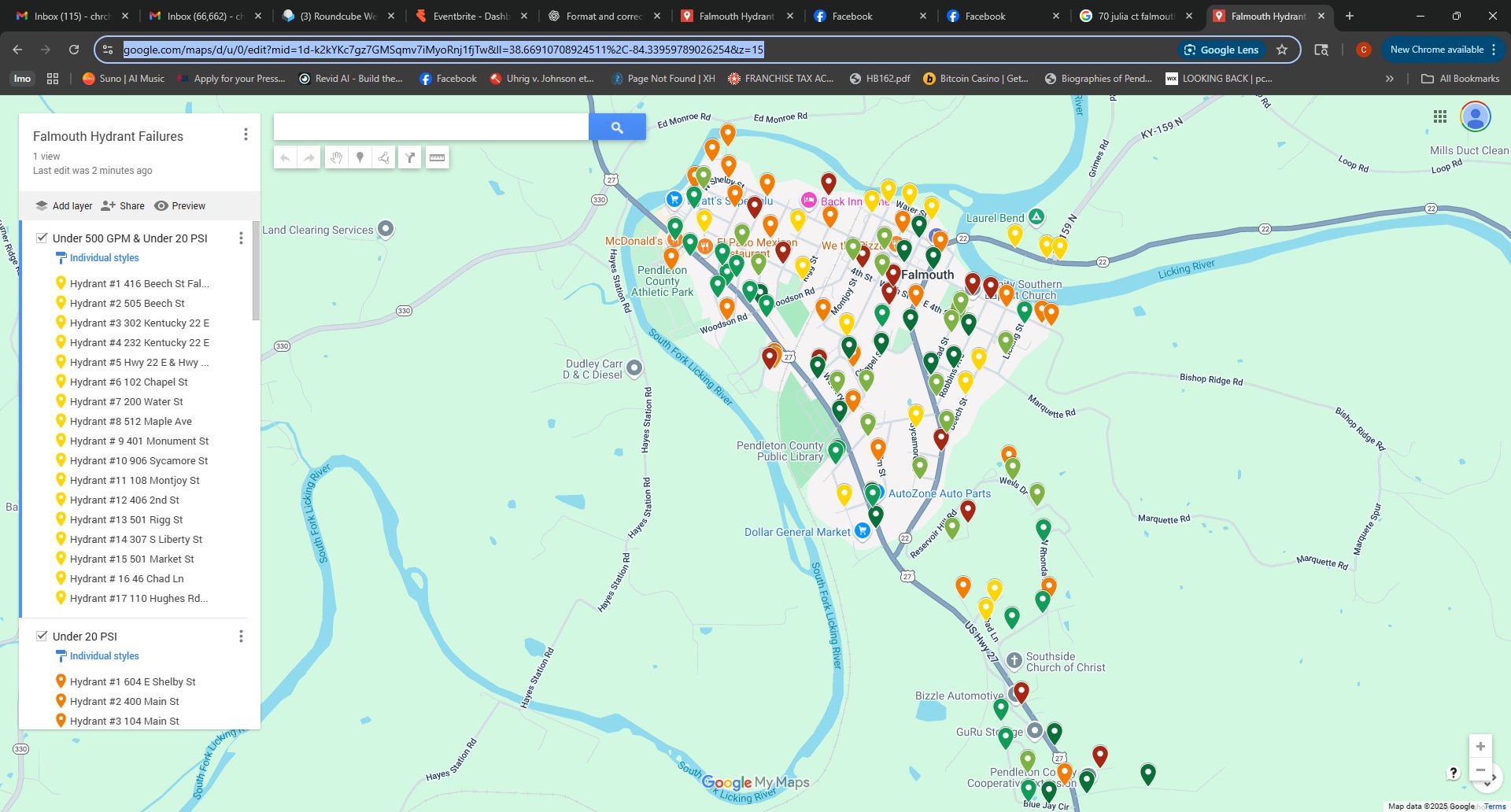Let’s Get Realistic.
This took me 8 hours. Not 8 weeks. Not a $50,000+ engineering contract. Just me, a spreadsheet, and Google My Maps.
Yes, an engineering firm might use ArcGIS and wrap it in bureaucratic polish. But this? This is what I’ve been trying to show you for months. Through article after article, while they ignored the data and hoped no one would look too closely.
Disclaimer:
3 Fire Hydrants have been fixed. I know what streets but not the addresses. I will update the map when I have the street addresses. They are 1 on Main St. 1 On Chapel St. 1 On South Liberty. 5 more hydrants have been ordered for August.
Industry Standard Blurb:
According to NFPA and AWWA standards, a working fire hydrant must deliver at least 500 GPM at 20 PSI residual pressure.
But real fire protection? That starts at 40 PSI and up, with 1,000+ GPM.
Under 20 PSI = Inoperable during an actual fire
20–40 PSI = Marginal. Risky. Unreliable.
Below code = Lives at risk. Insurance hikes. Legal exposure.
Map Legend:
Yellow – Under 500 GPM and under 20 PSI
Orange – Under 20 PSI
Red – Inoperable
Dark Green – Fully Functional
Greenish Blue – Serviceable
Light Green – “Meh.” Probably can’t touch a second-floor fire.
Now Read This. Slowly.
Southern Elementary.
2 Hydrants under 20 PSI
1 Inoperable
Working Hydrants: Zero.
To fight a fire at the only elementary school in town, first responders would need to:
Drag hoses across Riverside Cemetery to the Library
Or run them across US-27
Or run them to Dickerson Lane
Or somehow pull water from the river
That’s not a firefighting plan. That’s a crisis in progress. You want to know what’s broken in Falmouth?
Start with the hydrants and the pipes underneath them.
Stay tuned. We’re not done.
Whisper One Out

